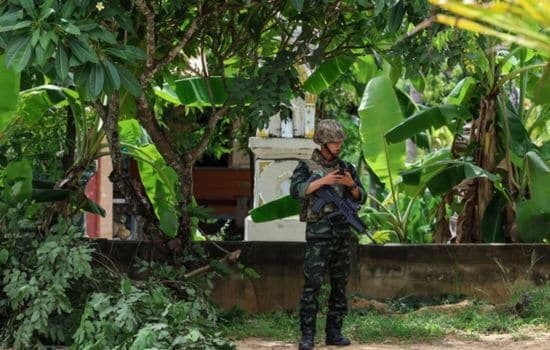The conflict between Thailand and Cambodia is a territorial dispute with deep historical roots. This tension is primarily concentrated in the area around the Preah Vihear temple, a site of great cultural and historical significance, which has generated legal and military disputes between the two countries.
Although the struggle for control of the region has intensified at times, the consequences of this conflict extend far beyond the territorial dispute. In times of tension, it is essential that the population prepare for potential confrontations and know how to react in emergency situations.
This text explores the causes of the conflict, its consequences, and offers guidance on how the population can prepare for a possible escalation of the conflict.
The conflict between Thailand and Cambodia
1. The Historical Origins of the Conflict
The origin of the conflict dates back to the colonial era, when the French Empire controlled Cambodia and the Preah Vihear temple, located on the border between Thailand and Cambodia.
During this period, the borders were not clearly defined, and the temple was registered as part of Cambodian territory.
However, over the years, disputes arose over the sovereignty of the area, especially after the end of colonial rule.
In 1962, the International Court of Justice (ICJ) issued a decision determining that the Preah Vihear temple belonged to Cambodia, but with access facilitated by Thailand.
This decision created tensions between the two countries, as Thailand did not fully agree with the ruling and felt it had lost part of its territory.
2. The Role of the Temple of Preah Vihear
The Preah Vihear temple, built in the 11th century, is a cultural heritage of great importance to Cambodians and Thais.
Located in a mountainous and inaccessible area, the temple became a symbol of power and identity for both countries. Its historical and cultural significance further intensified the dispute.
The temple was inscribed on UNESCO's World Heritage List in 2008, further increasing international attention to the area and heightening tensions between the two countries.
3. Military Conflicts and Crossfire
Over the years, territorial disputes between Thailand and Cambodia have resulted in armed clashes. The most significant clash occurred in 2008, when troops from both countries clashed in the areas surrounding the temple. In 2011 and 2013, further clashes occurred, resulting in deaths and injuries on both sides.
Although the confrontation never escalated into a full-scale war, the military clashes generated a climate of insecurity and mistrust between the two countries.
Consequences of the Conflict
1. Impacts on Local Populations
The impacts of the conflict have been significant for the populations living in the border areas between Thailand and Cambodia. Civilians were forced to flee their homes due to armed clashes, and infrastructure was damaged or destroyed.
The forced displacement of people caused economic and social hardship, especially in areas dependent on agriculture and local commerce.
2. Economic Consequences
The region's economy has also suffered due to the prolonged dispute. Trade between the two countries has been adversely affected, impacting local businesses and economies.
Tourism, especially in the areas around the Preah Vihear temple, was also affected, as insecurity and clashes kept visitors away.
Furthermore, the cost of maintaining military troops and investing in defense was significant for both countries, diverting resources that could have been used in other essential areas, such as education and health.
3. Impact on Regional Relations
The conflict between Thailand and Cambodia has also affected the stability of Southeast Asia. Regional organizations, such as the Association of Southeast Asian Nations (ASEAN), attempted to mediate the conflict but failed to achieve a lasting solution. The lack of consensus between the two countries affected regional cooperation and political stability in the region.
- Apps to Become a DJ from Your Mobile
- Best Apps to Watch Dramas
- Best Apps for Detecting Metals with Your Mobile Phone
- The Best Antivirus for Cell Phones
- Apps to Transform Photos to the Vintage Polaroid Style
How the Population Can Prepare for Conflict
Although a full-scale war has not occurred between Thailand and Cambodia, the possibility of an escalation of the conflict requires the population to prepare for any eventuality.
Preparedness isn't limited to physical protection; it also involves psychological and logistical issues. Below are some steps the public can take to prepare for a war or intense conflict scenario.
1. Preparation of Shelters and Bunkers
In the event of an escalating conflict, one of the first steps to ensure the safety of the population is the construction of shelters or bunkers. Although not everyone may have access to military installations, building makeshift shelters or home bunkers can be an effective measure to protect people from airstrikes or bombing. To build a simple shelter, people should seek underground areas, such as basements or cellars, or even reinforce the structures of their homes with more resistant materials.
2. Essential Supplies
In times of war, access to food, water, and medicine can be disrupted. Therefore, it is crucial for families to have at least 15 days' supply of essential supplies.
Essential items include non-perishable foods such as rice, beans, canned goods, pasta, and powdered milk, as well as sufficient drinking water. It's also essential to have basic medications, such as pain relievers, antiseptics, and medications for chronic illnesses.
In addition to food and medicine, it's important to have flashlights, extra batteries, adequate clothing, blankets, and a first aid kit. Preparing these items in advance can save lives and help people cope during times of crisis.
3. Psychological Preparation
In addition to physical measures, psychological preparation is equally important. War and conflict can have a devastating impact on people's mental health.
Being aware of the difficulties that arise during times of war and seeking emotional support can help people cope with stress, anxiety, and other psychological problems.
Support groups and solidarity among neighbors and family members are essential for emotional resilience during a crisis.
4. Safety and Evacuation Measures
In a war scenario, evacuation may be necessary to ensure the safety of the population. It is important for each family to have a well-defined evacuation plan, with escape routes and meeting points in safe locations.
Local authorities should provide clear information about safe locations, support centers, and evacuation routes.
Communication is also a vital aspect. During conflicts, lines of communication may be disrupted, but it is essential that people have means to communicate with other family members or neighbors.
Having extra batteries for cell phones and portable radios can be helpful in staying informed about the situation.
5. Education on Human Rights and Refugee Rights
In the event of forced displacement due to conflict, it is important for people to know their rights as refugees or internally displaced persons.
International organizations, such as the United Nations High Commissioner for Refugees (UNHCR), offer guidance and support to people fleeing war zones.
Knowing your legal rights and having access to information on how to seek refuge can be essential for the safety and protection of civilians.
Conclusion
The conflict between Thailand and Cambodia is an example of how territorial disputes and historical issues can lead to military confrontations and affect the stability of an entire region.
Although international and regional authorities are attempting to mediate the conflict, affected populations must be prepared for the worst.
Proper preparation for war means not only ensuring physical protection, but also being psychologically and emotionally prepared to face adversity.
Measures such as building shelters, stockpiling supplies, preparing for evacuation, and understanding legal rights are essential to ensuring public safety in times of crisis.
Peace and diplomacy are always the best path, but emergency preparedness is essential to ensure survival and resilience in times of war.






